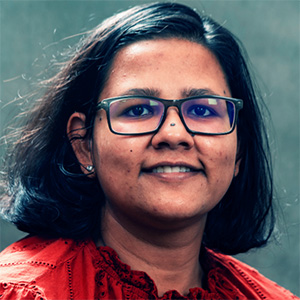Common psychotropic meds disrupt cholesterol synthesis in brain
We are all aware of the risks of elevated cholesterol in cardiovascular health, but it is also a lipid we can’t live without. Our bodies require cholesterol to form cell membranes, steroid hormones and vitamin D. And the brain contains around 20% to 25% of the body’s cholesterol, which it needs to develop and function. So what happens when cholesterol synthesis in our brains is disrupted?
Károly Mirnics, a professor at the University of Nebraska Medical Center, and his lab have long studied the molecular basis of brain disorders. Their recent paper on psychotropic medications that inhibit cholesterol biosynthesis in the brain has been published in the Journal of Lipid Research.

“Cholesterol is synthesized by a cascade of events that are complex and with multiple branches, but there is one particular molecule that is the direct precursor of cholesterol called 7-dehydrocholesterol, or 7-DHC,” Mirnics said. “7-DHC is very unstable, falls apart very quickly, and is the most oxidizable lipid known to mankind.”
An enzyme converts 7-DHC to cholesterol in the final step of the cholesterol biosynthesis pathway. In humans, the DHCR7 gene provides instruction to produce this enzyme, and mutations in this gene can cause Smith–Lemli–Opitz syndrome, or SLOS. Symptoms of this rare disorder, including growth and developmental delays, appear before or soon after birth. Elevated 7-DHC is a common molecular marker for diagnosis of SLOS.
“Around 10 years ago, several adult patients receiving commonly used psychotropic medications were misdiagnosed with SLOS based on their high 7-DHC levels,” Mirnics said. “These patients did not have a mutation in the (DHCR7) gene, so we asked if it could be from the medications, and that started our research.”
Aripiprazole, or ARI, an antipsychotic used to treat schizophrenia and bipolar disorder, and trazodone, or TRZ, an antidepressant, are commonly prescribed in the US. Psychiatrists often treat patients simultaneously with multiple drugs, but the side effects of these medications are not entirely known. So Mirnics and his group set out to investigate how they affect molecular and biochemical functions in the brain.
“I have to stress that our studies are all in mouse models, but the mouse cholesterol biosynthesis pathway is conserved across vertebrates, including humans,” Mirnics said.
When the researchers treated cell cultures and genetically modified mice with ARI and TRZ, they saw that the combined therapy disrupted cholesterol biosynthesis in developing brain cells such as neurons and astrocytes. Adult mice treated with ARI and TRZ had elevated levels of 7-DHC — just like the patients who were misdiagnosed with SLOS.
SLOS is very rare. Babies with the disorder must inherit two nonfunctional or mutated copies of the DHCR7 gene from each parent. Many more people, around 1% to 3% of the population, are asymptomatic carriers with one mutated and one functional copy of the gene. Mirnics cautions that individuals with genetic mutations in the cholesterol biosynthesis pathway are most vulnerable to treatment with medications like ARI and TRZ.
“I am not saying these drugs are bad,” Mirnics said. “But they may not be the best choice for individuals with genetic predisposition, or during pregnancy without knowing the genotype of the parents or the baby.”
The lab is trying to catalog all commonly used medications that disrupt cholesterol biosynthesis. Mirnics expects this information will be useful for physicians, especially when prescribing drugs for patients with genetic predispositions. In the near future, personalized medicine will exist in which our genetics could determine our drugs.
Enjoy reading ASBMB Today?
Become a member to receive the print edition four times a year and the digital edition monthly.
Learn moreGet the latest from ASBMB Today
Enter your email address, and we’ll send you a weekly email with recent articles, interviews and more.
Latest in Opinions
Opinions highlights or most popular articles

The tortoise wins: How slowing down saved my Ph.D.
Graduate student Amy Bounds reflects on how slowing down in the lab not only improved her relationship with work but also made her a more productive scientist.

How pediatric cataracts shaped my scientific journey
Undergraduate student Grace Jones shares how she transformed her childhood cataract diagnosis into a scientific purpose. She explores how biochemistry can bring a clearer vision to others, and how personal history can shape discovery.

Debugging my code and teaching with ChatGPT
AI tools like ChatGPT have changed the way an assistant professor teaches and does research. But, he asserts that real growth still comes from struggle, and educators must help students use AI wisely — as scaffolds, not shortcuts.

AI in the lab: The power of smarter questions
An assistant professor discusses AI's evolution from a buzzword to a trusted research partner. It helps streamline reviews, troubleshoot code, save time and spark ideas, but its success relies on combining AI with expertise and critical thinking.

How AlphaFold transformed my classroom into a research lab
A high school science teacher reflects on how AI-integrated technologies help her students ponder realistic research questions with hands-on learning.

Writing with AI turns chaos into clarity
Associate professor shares how generative AI, used as a creative whiteboard, helps scientists refine ideas, structure complexity and sharpen clarity — transforming the messy process of discovery into compelling science writing.

